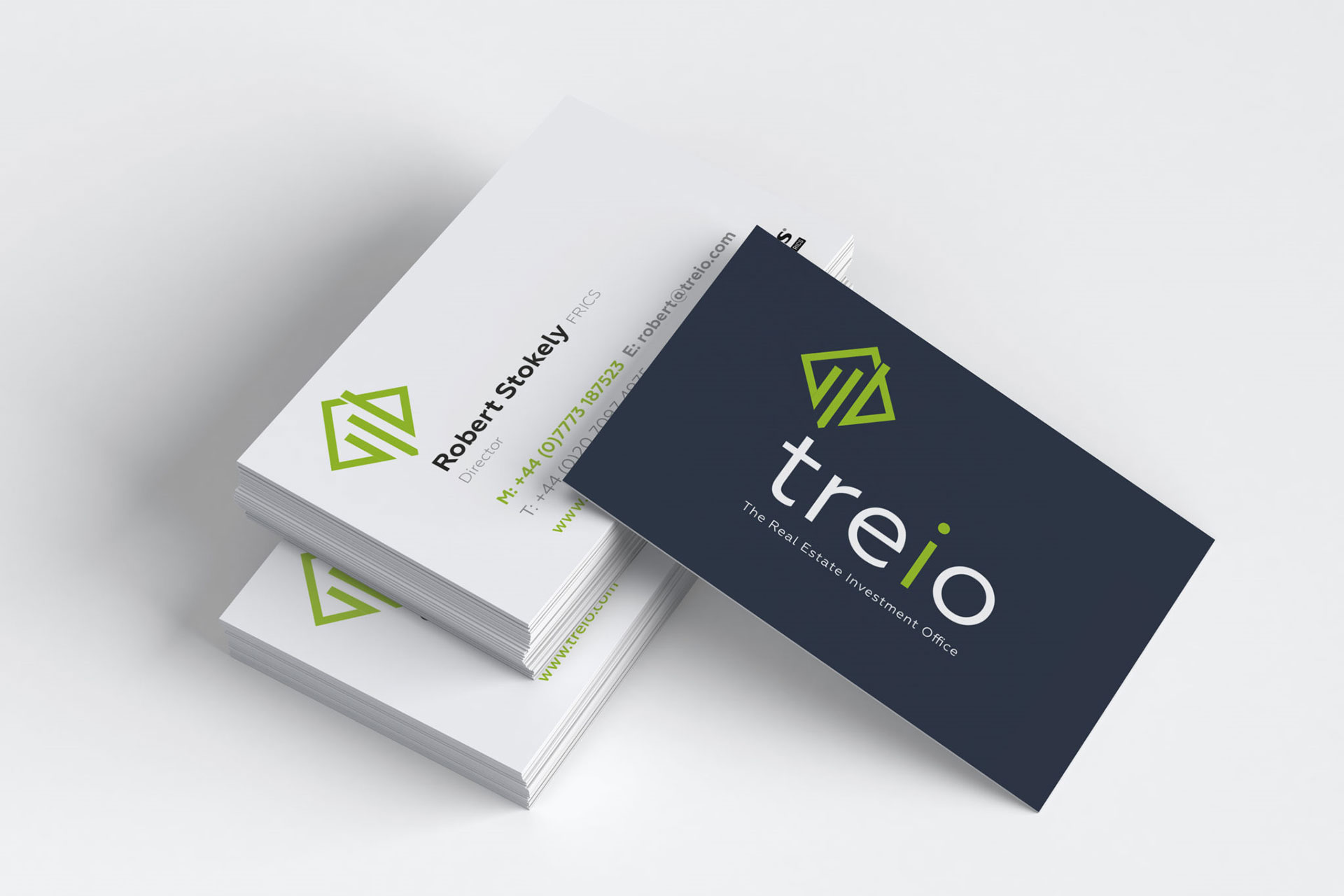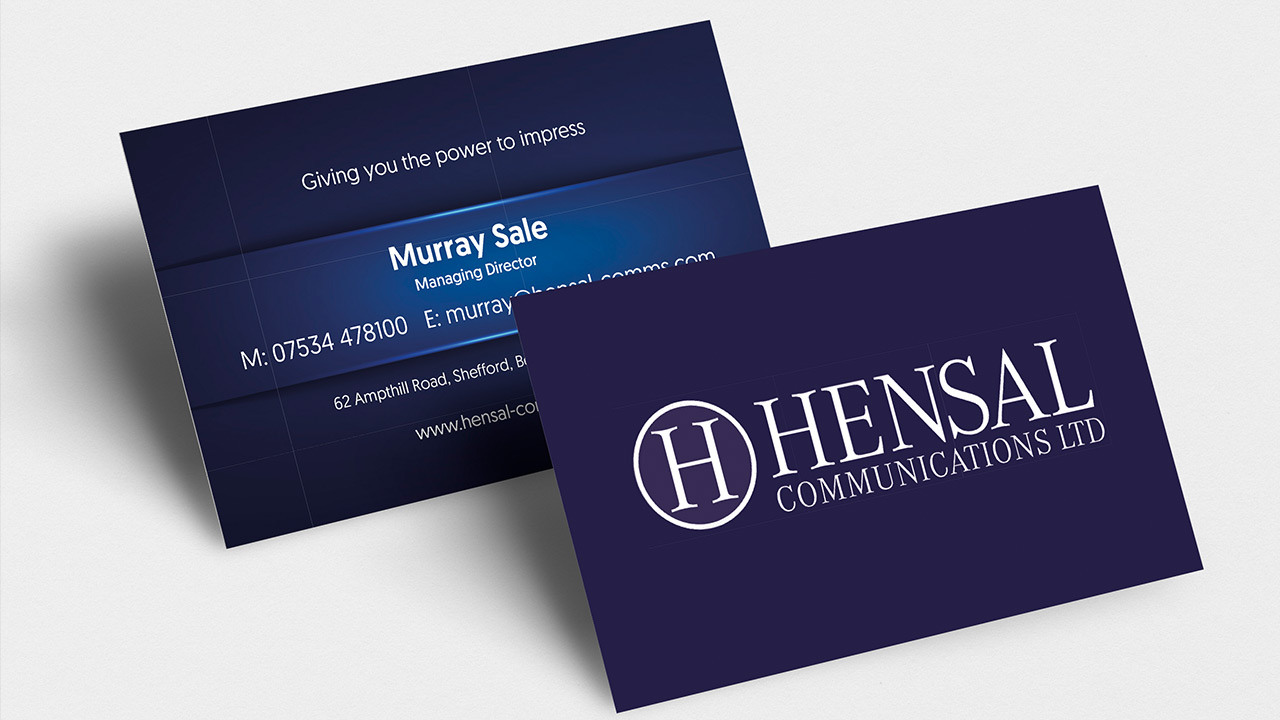Business cards are an important part of your brand and are often the first thing people will see when they interact with your company. Business cards can help create a memorable impression, so it pays to get it right. Here are our top 10 tips for designing an eye-catching, effective business card:
1. Choose a Unique Business Card Design
When it comes to designing a business card, unique and creative touches can make all the difference. While off-the-shelf templates offer a quick and convenient way of producing business cards, they come with their own set of risks – since these designs are already used in many other places, your card will seem like just another template if you use one. You will also find businesses in similar industries to you will be drawn to the same templates, layouts and colours, meaning you will blend in with your competition. Instead of taking this risk, it is better to put in more time and thought and create an original design that reflects the brand behind the business.
Having a unique, professional business card design is a great way to make a good impression with potential customers. It lets them know that you take your business seriously and that you are willing to go the extra mile by investing in professional-looking materials. A unique design for your card can also help people remember who you are and what services you offer. It’s an effective way of standing out from the crowd and getting noticed, so spend time making it look professional and inviting so that potential customers are eager to pick it up and reach out to you.

2. Incorporate Your Brand Colours and Logo
In order to create a unified and memorable impression for your business, incorporating your brand colours and logo is key. Using the same hues, fonts and visuals in all branding will solidify recognition of who you are and what you do. It’s all part of implementing your branding in a professional and effective way. One way to incorporate these elements into your business card is to use the logo as an attention-grabbing centrepiece with brand-matching colours used both for the text, as well as any design elements – from intricate patterns to simple, yet effective decorative lines. With this considered approach for your business communications, clients will easily recognise who you are at first glance.
3. Add Relevant Contact Information
One of the simplest yet most effective business strategies when connecting with potential partners, employees, or customers is to provide your business card with up-to-date contact information. Whether presented electronically or physically, business cards can be a great way to ensure that all relevant information is shared in an organised and professional manner. It’s also a great way to make sure you may stay connected throughout and after any business interaction: if someone has your business card, it’s easy for them to reach out – email address, phone number, website address, social media links, or other important contacts included.
If you are unsure which contact details you should be using, look at your competitors’ cards for a good indication. Business cards are often presented in the same format, so use this as a starting point for your own business card.

4. Use Quality Materials for the Business Card
The look and feel of your business card are just as important as the design, it’s important to ensure a high-quality print and production gives just as good an impression as the design. The paper type and quality will make your design stand out and impact the ‘hand feel’ of your card, cheap and nasty paper stock might save a few pennies but it will show through when you start to hand them out. Research paper types to find the right one that fits your budget while still giving a professional feel and communicating the right message about your business. Talk to your designer about the benefits of each type of paper and even for examples to see how they feel and what impacts it will have on the design.
Your designer will also be able to help with other considerations on the materials that might be important for you, for example, the environmental impact, costs and delivery times.
5. Utilise Both Sides of the Business Card
Don’t forget that the back of your card can be used too! If you want to communicate even more information, adding extra details on the back of the card is a smart and efficient way to do it without taking away from the design.
You may consider adding additional contact methods such as social media accounts, use of icons or illustrations related to your services, helpful tips or useful facts about yourself or company – anything that will help potential customers remember who you are and what you do. This can also be an opportunity to showcase your creative skills by using unique graphic elements. Make sure that whatever information you decide to add is clear and legible, so people don’t have trouble reading it.
6. Make Sure It’s Readable and Professional-Looking
It’s easy to get carried away with the design of your card, but it’s important throughout the process to ensure the card is readable and professional looking. Overcrowding the design with visual elements or not having text clearly readable will negate the point of the business card in the first place!
Getting feedback on the card design will help you get fresh unbiased input before you go to print, sometimes you can get too close to a design to be able to see its flaws.

7. Consider Including a Call to Action on the Business Card
Calls to action help give people a clear idea of what you want them to do, on websites they are used to drive people to complete purchases or sign up for newsletters, but they can also be used on your business card to help encourage potential customers to reach out.
You could use a call to action as an invitation for people to get in touch, visit your website or sign up for your newsletter, adding a sense of urgency and importance to the message you are trying to convey. This is especially helpful for those contacts you might not have had the chance to meet face-to-face yet, making sure your card stands out from the crowd and giving people an incentive to remember you.
8. Include Social Media Links or QR Codes
Adding your social media accounts to your business cards is a great way to make sure people can find you online and follow up on the contact if they choose. This can be especially handy to those who prefer not to give out their personal email address, providing a more professional and secure channel of communication. It’s also a softer option for people to follow your updates without having to hand over personal contact details, this will let you keep your foot in the door for later conversion.
You can also consider adding a QR code with a link to your website or other digital information. This can be a great way to ensure people have easy access to more detailed information without having to type in long web addresses. It’s also an effective way for others to share your details once they have your cards without having to hand over the card itself.
9. Use Creative Shapes and Finishes for Your Business Cards
You can go a step further and make sure your cards stand out in the crowd by using unique shapes or finishes. Business cards come in standard sizes but you can get creative with the shape, for example, opt for rounded corners or wavy edges to add some flair and personality to your card. This can follow elements from your branding to bring the whole thing together.
You can also use special finishes to further enhance the visual appeal of your cards, from glossy varnishes and spot UVs to gold foils or embossing. The choice is yours but make sure it reflects the look and feel you are going for in terms of business identity.
10. Keep Track of How Many Business Cards You Have Left
This may sound like a minor detail but it’s actually very important to keep track of the number of cards you have left and when to print more. Business cards are great for networking, just make sure that you always have enough in stock!
Keeping tabs on the business cards you hand out and how many were taken will also help you assess how effective your networking activities have been and track who may have taken cards from you.
Knowing when to reorder will also help manage lead times and give you time to review the contact details before ordering more – there is nothing worse than being rushed into it and spotting out-of-date details when they arrive.

Summary
Business cards are invaluable tools for small businesses and start-ups, with a bit of extra planning and creativity your business cards will be all the more effective. If you need help get in touch, we have over 30 years in creating award-winning designs and can help from initial planning through to print and production.




